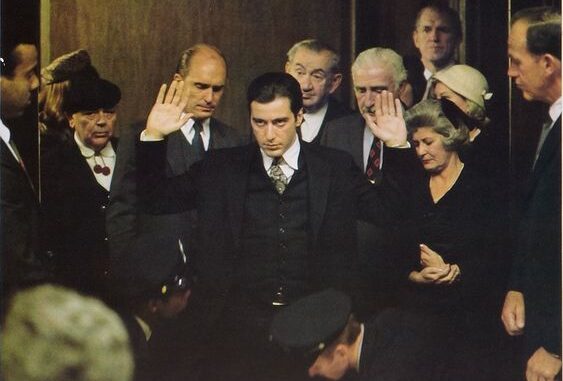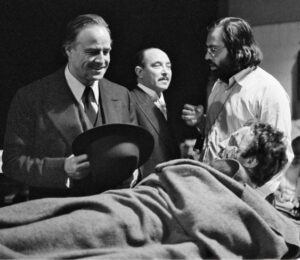
‘The Godfather’ at 49: The vendettas, tirades and real Mob threats behind the classic novel, movie

The strange man confronted Mike Royko one morning in March 1973. He materialized in the Chicago Daily News columnist’s office, glaring at Royko with an unsettling ferocity.
“I am Michael Corleone,” he declared.
The man’s name actually was Francis Blakely, and he’d recently walked away from a psychiatric hospital. He told Royko he planned to run for mayor. The columnist said that sounded like a good idea.
The intruder “had an intense way of talking, using cryptic phrases and veiled threats,” Royko later told the FBI. Blakely had repeatedly tapped at his coat pocket as he stood in the office doorway, leading Royko to suspect the man had a gun.
The seed for this unusual encounter was planted four years before, on March 10, 1969, when a little-known writer named Mario Puzo published the novel “The Godfather.” The story revolved around Michael Corleone, the youngest son of Vito Corleone, head of a New York-based crime family.
The fictional Corleones became an obsession for Blakely and millions of others, especially after director Francis Ford Coppola launched a film franchise in 1972. Forty-nine years after the book’s publication, “The Godfather” remains a cultural touchstone, a violent yet romanticized version of Mob life — and the American Dream — that has influenced how Americans view themselves and the world around them. Below, to celebrate the anniversary of the novel’s publication, we roll through some of the memorable things you didn’t know — or have forgotten — about “The Godfather” phenomenon.
Before “The Godfather,” Puzo had published three novels that didn’t sell well, and he paid his bills by writing for down-market men’s magazines.
The author would later admit that he wrote “The Godfather” not for art but “to make money. [My] editors didn’t like the idea behind my next novel. It sounded like another loser. One editor wistfully remarked that if ‘Fortunate Pilgrim’ [his 1965 novel that had a mobster subplot] had only had a little more of that Mafia stuff in it maybe the book would have made money. I was 45 years old and I owed $20,000 to relatives, finance companies, banks and assorted bookmakers and [loan sharks]. It was really time to grow up and sell out, as Lenny Bruce once advised. So I told my editors ‘OK, I’ll write a book about the Mafia.’ ”
It wasn’t as simple as that, though. He wrote a 10-page outline, which his publisher — Atheneum — rejected.
“They showed me the door,” he said in an interview years later. “There is no way to explain the terrible feeling of rejection, the damage.”
But he didn’t give up, and G.P. Putnam’s & Sons eventually gave him a $5,000 advance to write the book.
Five thousand bucks, of course, wasn’t enough to get the banks, bookmakers and loan sharks off his back. And the money he owed apparently was weighing on him as he waited for “The Godfather” to reach bookstore shelves.
Legendary movie producer and studio chief Robert Evans recalled Puzo coming to see him in March 1968. He said Puzo was desperate to have Evans buy a film option on the not-yet-published novel.
“I owe eleven Gs bad,” Puzo supposedly told Evans. “If I don’t come up with it, I’ll have a broken arm.”
Evans was not impressed by the author or the movie idea being pitched. “I didn’t even want to read it,” he said of the novel.
Puzo, who died in 1999, insisted Evans’ recollection about the meeting was incorrect.
